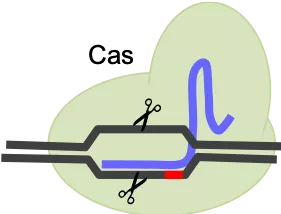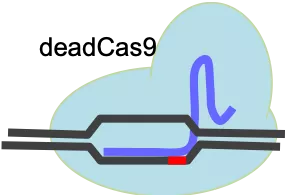What is CRISPR
CRISPR is a sequence specific gene-editing tool, utilizing a system found in bacteria to introduce double-stranded breaks in the DNA of eukaryotic cells using the endonuclease Cas9.
After the cut the break is repaired through non-homologous end-joining (NHEJ) resulting in inserts or deletions (indels) causing gene disruption. If a donor template is present/introduced this can be inserted into the genome using homology directed repair (HDR). DeadCas9 (dCas9) is mutated version of Cas9 that no longer cuts, but still localizes to, the DNA strands. The conjugation of activators (VP64), repressors (KRAB) or fluorophores have opened up additional applications of the CRISPR system beyond traditional gene-editing.
CRISPR Applications
Cas9
- Gene disruption
- SNP/mutation correction
- Lineage tracing
- Reporter lines
- Tagged proteins
- Barcoding
- Phenotype screens
dCas9
- Gene silencing
- Gene activation
- Chromatin/locus visualization



